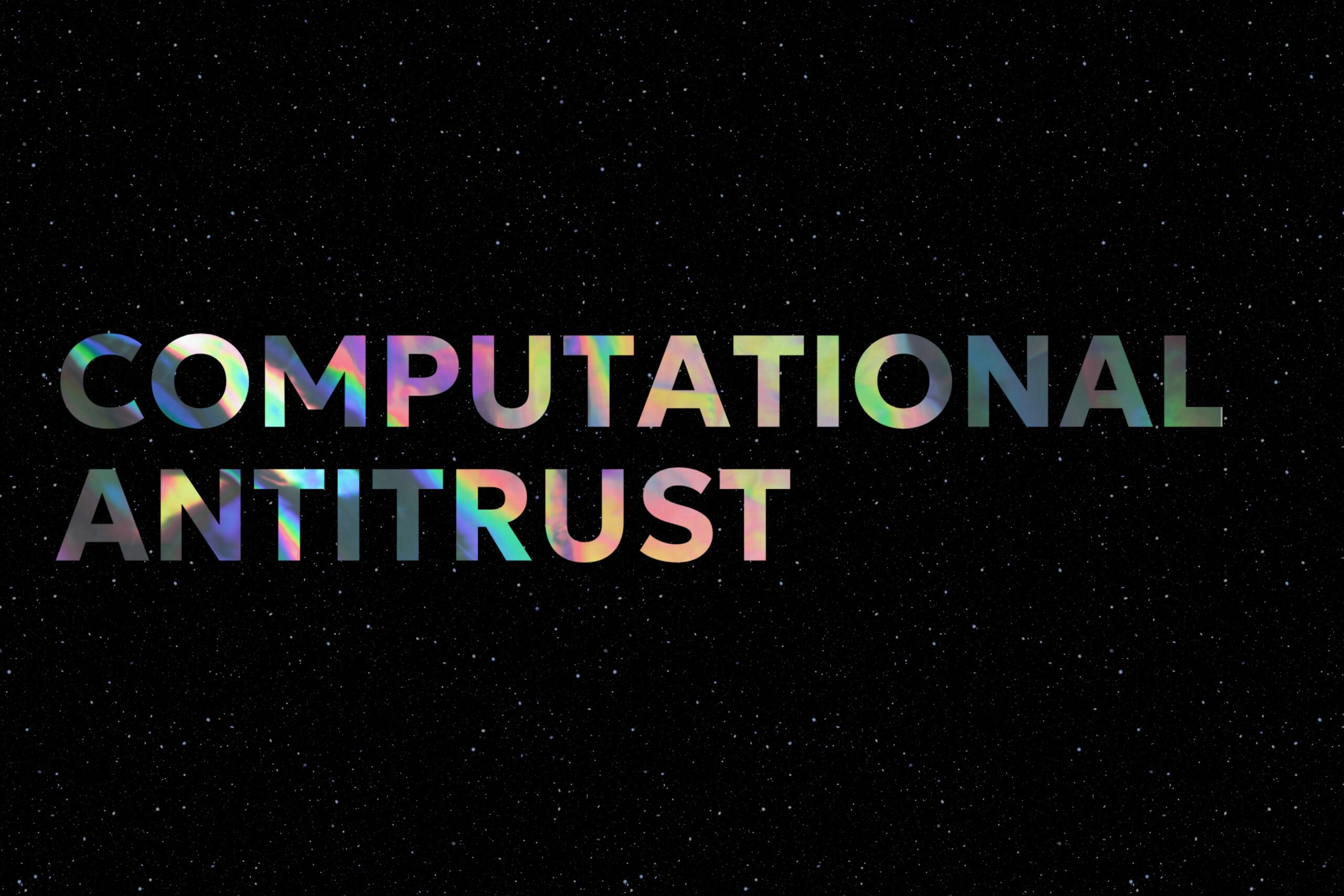Abstract: Many of Europe’s economies are hampered by a waning number of innovations, which in part is attributable to the European financial system’s aversion to funding innovative enterprises and initiatives. Specifically, Europe’s innovation finance ecosystem lacks scale, plurality, and risk appetite. These problems could be addressed by new and creative approaches and technologies for financing dynamism in the economy, such as “FinTech” innovation. However, these novel approaches may be held back by regulation that focuses on stability, avoid forum shopping, and prevent fraud, to the exclusion of other interests, particularly ignoring innovation and renewal. This article argues that this could be addressed by adopting an “innovation principle” in regulatory impact assessment: prioritizing regulatory approaches that serve to promote innovation while also addressing other regulatory aims.
1. Introduction
Innovation does not fall from the sky. It is not evenly distributed globally, nor does it appear only in poorly regulated areas or strictly follow R&D spending as a percentage of GDP. Innovation occurs in contexts and frameworks, in cities and countries, and perhaps most importantly of all, in the greatest proportion in ecosystems of innovation or clusters like Silicon Valley and Cambridge/Boston in the United States, and Berlin, Tallinn, and Cambridge in the European Union (EU), in China, South Korea and Japan. Innovation is a “team sport.” Leadership and its impact on innovation, whether in an organization or in a geographical location, is important because of the collective nature of the process, and is just starting to be analyzed as a component of innovation (Hill, Brandeau, Truelove, & Lineback, 2014).
This article explores how to create innovation-friendly environments through a holistic policy that integrates an innovation principle into regulatory impact assessments for laws affecting the economy or nonmarket sectors.
The role of finance in enabling the development and implementation of new ideas is indeed vital; as the physicist Phil Anderson (Gertner, 2012, p. 154) has said, “Never underestimate the importance of money.” Schumpeter (1942) wrote, “[the] process of Creative Destruction is the essential fact about capitalism. It is what capitalism consists in and what every capitalist concern has got to live in.” An economy’s dynamism depends on innovative competitors challenging, and if successful, taking the place of complacent players in the markets. These newcomers need capital to grow at multiple stages. As Mazzucato (2013a, p. 863) puts it, “regulation of financial markets must go hand in hand with policies that are aimed at innovation and industrial policy.”
2. Background: Innovation, Financing, and the Role of Policy
2.1. What Do We Mean by Innovation?
Defining innovation and its specific types is a crucial starting point. This article considers innovation beyond science or the creation of new commercial products (Fagerberg, Mowery, & Verspagen, 2009). Research can be considered an input to innovation, along with human capital, but it is not sufficient in and of itself to ensure innovation and a dynamic economy.
The OECD (2010) defines innovation as “the implementation of a new or significantly improved product (good or service), process, a new marketing method, or a new organizational method in business practices, workplace organization or external relations.” Eugene Gordon, a Bell Labs development scientist, observed that “if you have not manufactured the new thing in substantial quantities, you have not innovated; […] if you haven’t found a market, you have not innovated” (Gertner, 2012, p. 109). This additional perspective on the definition of innovation is essential. For something to be considered innovation, it must be functional in the real world.
2.2. Impediments to Financing Innovation in Europe
Many areas of innovation benefit from synergies with defense spending in open democracies. The Defense Advanced Research Projects Agency (DARPA) in the U.S. demonstrates how defense budgets can boost broader economic innovation. However, European innovation cannot rely solely on government defense spending for funding.
There is an urgent need in Europe for funding the real economy to drive job creation and growth, particularly through long-term “patient” capital. Phelps (2013) wrote that “A country’s dynamism also depends on the pluralism of views among financiers,” and it is clear that the EU could benefit from a more diverse and pluralistic finance sector landscape oriented toward the real economy and innovation. Economists such as Phelps and Mazzucato criticize the growing short-term focus in business and finance, which has reduced the availability of long-term “patient capital” for innovative enterprises (Mazzucato, 2013b, 2013c). As a result, the median shareholding period has dropped to just 10 months (Christensen & van Bever, 2014).
This shortage of funding is particularly acute in the EU, where the financial ecosystem is bank-dominated. It is characterized by lending a majority of its funds to households, as well as by a depleted industry and sector-specific skills base in lending and risk management. Especially now, as a reaction to the markets having priced risk too low before the financial crisis, risk is being priced too high in Europe. This is starving innovation efforts of private financing. Many small and medium sized enterprises (SMEs) and startups in the EU also face the so-called “financing gap,” resulting in a deterioration in public financial support, access to loans, trade credits, and equity investments (European Commission and European Central Bank, 2013).
There is also a gradual decline in funding for risky innovation. The former Industrial and Commercial Finance Corporation was founded in 1945 by the Bank of England to fund small and medium-sized companies. In the 1980s, renamed 3i, it maintained a regional office in Cambridge Science Park and as a part of the Cambridge innovation ecosystem funded enterprises that were spun out from the University of Cambridge. However, by the 2000s, it had retreated from early stage financing (Kirk & Cotton, 2012).
The formulation and implementation of financial sector policies aiming to open up the innovation landscape must be high on the agenda of European policymakers. Again, as Mazzucato puts it, (2013a, p. 856), “From a policy-making point of view, it is crucial to consider how the ‘eco-system’ of financial institutions can ‘broaden out’ the innovation landscape rather than close it down, as is currently the case in many sectors.” Of course, the policies addressing financial institutions and the promotion of innovation cannot be considered in isolation; they are intertwined.
2.3. The Need for New Policies in Europe
While improvements in banks’ industry expertise and credit evaluation methods to assess innovation potential are welcome, they alone will not be enough to close the financing gap faced by innovative enterprises. Mazzucato (2013a, p. 852, 2013b, 2013c) wrote: “As traditional profit maximizing banks fear the kind of fundamental uncertainty underlying innovation, innovation has often had to be funded by alternative sources, such as venture capital, business angels or public funding bodies, including state investment banks.”
An alternative source of capital often purported to be the most natural fit for innovation is venture capital. However, venture capital is typically not sufficient or patient enough to go through all the stages of developing a completely new technological breakthrough. VCs will typically analyze the personnel of the startup, the scientific merits of its technology, and the potential market size. The greater the risk that they perceive in the investment, the greater the size of the market they wish to see to compensate for it
There is a need to stimulate other complementary sources of finance to fund the entrepreneurial and innovative economy. Without that petrol of money, the engine of the new technology economy will simply stall and come to a halt.
3. The Innovation Principle in Regulatory Impact Assessment
3.1. New Approaches and Technologies for Funding Innovation
Where will these new complementary sources of finance come from and how will these funds be disbursed in the real economy? The Internet has made it possible to fund innovation in new ways like crowdfunding, which is itself an innovation in finance. New approaches made possible by the Internet such as other FinTech (technology-enabled financial innovation) initiatives could provide depth and a plurality of perspectives fostering innovation in financial services and in the economy as a whole.
In the spirit of renewing the economy on the basis of creative destruction, there is no reason to think that financial institutions should be immune to disruptive innovation produced by new entrants and made possible by the Internet that offers completely novel ways of saving, insuring, loaning, transferring, and investing money. Equally, the form of money itself has not been, and need not be, protected from change, again made possible by the Internet. Virtual currencies form an intriguing part of the FinTech sector with great potential for, among other things, disintermediating online payments currently undertaken with credit and debit card services.
The aforementioned additional funding sources could serve to diversify and invigorate the EU’s financial sector and consequently invigorate its economy, particularly in terms of innovative enterprises. New possibilities have arrived and the time has come to integrate them into the overall financial frameworks in a manner that does not neuter their creativity or lower their potential to revitalize the economy.
When assessing frameworks to prevent systemic risks and regulatory arbitrage, it is crucial to ensure they do not unintentionally restrict financing for innovative enterprises, particularly high-tech startups, or further drive capital to retreat behind national borders. It is time for a new perspective grounded in an “innovation-friendly” philosophy and regulatory approach to emerge.
3.2. Unlocking New Approaches and Technologies Via the Innovation Principle
A more holistic innovation policy, aggregating regulation, business policy, and promotion of innovation should be forged through being proactive, using legislation and standards to enable innovation, utilizing innovation-friendly policy stances and explicitly considering the impact on innovation as part of the regulatory/policy impact assessment procedure.
Competition in the interests of the consumer and of entrepreneurs looking for funding should be encouraged as much as possible. Such an approach is consistent with being ready to step in if abuses do, or threaten to, arise while leaving space for new ideas to gain traction rapidly, without being overburdened by regulatory requirements at an early stage.
An area in which the interests of financing innovation and innovation in the financial sector coincide is that of the FinTech entrepreneurial community. Keeping with the theme of Schumpeterian creative destruction, the financial sector is one seen as being particularly ripe for disruptive innovation, given its current profits and lax competition. Technology-driven disintermediation of many financial services is on the cards.
When considering future FinTech regulation, the innovation principle should guide the selection of the optimal regulatory framework and specific rules—whether at the national, European, or global level.
4. Conclusions: The Innovation Principle and Future-Proofing Legislation
One of the factors that should be considered prominently and systematically in future impact assessments is the effect that the legislative or policy alternative would have on innovation (“the innovation principle”). This should be part of an approach ensuring not only that regulation is clear and proportional so that innovators can easily comply but also of being ready, in appropriate cases, to adapt regulation to enable specific innovations or a class of innovation. This same recommendation can be made to national level procedures evaluating the impact of proposed legislative initiatives. It is important that any analysis of innovation is not reduced solely to evaluating the initiative’s impact on research spending, which is just an input into innovation, and which is less relevant to some innovative sectors.
Any legislation that might eventually be proposed should be “future proofed” in that it should not lock in, or be predicated on, today’s existing technologies, business models, or processes. Any pertinent legislation should not protect existing models or try to foresee everything that the private sector might develop at the expense of future innovation in the domain.
This approach is grounded in not simply abstaining from regulating but selectively choosing when to regulate with a view to increasing innovation in the economy and society. If Europe is serious about building an innovation-driven economy, innovation must be systematically integrated into policy frameworks. The impact of all policies on the innovation potential of companies, social actors, and the public sector must be carefully assessed. As addressed in this article, finance for innovation and innovation in finance are precisely areas that could flourish in the wake of this kind of approach.
* Pēteris Zilgalvis, Visiting Fellow, St. Antony’s College, University of Oxford (at time of publication);
currently, Judge, General Court of the EU.
All views expressed are those of the author and do not necessarily coincide with those of,
or represent, the aforementioned institutions.
***
Citation: Pēteris Zilgalvis, The Need for an Innovation Principle in Regulatory Impact Assessment, Network Law Review, Winter 2025
References:
- Atkinson, R.D., and S.J. Ezell. 2012. Innovation Economics: The Race For Global Advantage. New Haven and London: Yale University Press, 49–54, 155–56, 162–65, 255, 261.
- Bergkamp, L., and L. Kogan. 2013. “Trade, the Precautionary Principle and Post-Modern Regulatory Process: Regulatory Convergence in the Transatlantic Trade and Investment Partnership.” European Journal of Risk Regulation 4: 493–507.
- Christensen, C.M., and D. van Bever. 2014. “The Capitalist’s Dilemma.” Harvard Business Review 92 (6): 62, 68.
- Dunkley, E. 2014. “FCA Rules on Crowdfunding Investment.” Financial Times, FT Money (March 8, 9): 3.
- European Central Bank-European Commission. 2013. SMEs Access to Finance Survey. http://ec.europa.eu/enterprise/policies/finance/files/2013-safe-analytical-report_en.pdf.
- European Commission. 2013. Communication on Shadow Banking‑Addressing New Sources of Risk in the Financial Sector COM/2013/0614 final, 14.
- European Commission. 2014a. Communication From the Commission: Guidelines on State Aid to promote Risk Finance Investments C(2014) 34/2.
- European Commission. 2014b. Communication From the Commission to the European Parliament and the Council on Long-Term Financing of the European Economy COM (2014) 168 final.
- European Commission. 2014c. Communication from the Commission to the European Parliament, the Council, the European Economic and Social Committee and the Committee of Regions: Unleashing the Potential of Crowdfunding in the European Union, March 27, 2014, COM (2014) 172 final.
- European Commission Impact Assessment Guidelines SEC (2009) 92. 2009. http://ec.europa.eu/smart‑regulation/impact/commission_guidelines/commission_guidelines_en.htm.
- European Risk Forum. 2013a. Communication 12, The Innovation Principle‑Letter to the Presidents of the European Commission, the European Council and the European Parliament, October 2013. www.riskforum.eu.
- European Risk Forum. 2013b. Background Note 14‑Innovation and the Regulation of Risk (2013). www.riskforum.eu, 3.
- Fagerberg, J., D.C. Mowery, and B. Verspagen. 2009. Innovation, Path Dependency, and Policy: The Norwegian Case. Oxford, UK: Oxford University Press, 3.
- Financial Conduct Authority. 2014a. Policy Statement PS14/4 -The FCA’s Regulatory Approach to Crowdfunding Over the Internet, and the Promotion of Non-Readily Realisable Securities by Other Media: Feedback to CP13/13 and Final Rules. www.fca.org.uk. 5, 6, 35.
- Financial Conduct Authority. 2014b. Supporting Innovation in Financial Services: Call for Input into Project Innovate. www.fca.org.uk/about/what/promoting-competition/project-innovate.
- Financial Stability Board. 2011. Shadow Banking: Strengthening Oversight and Regulation. http://www.financialstabilityboard.org/publications/r_111027a.pdf.
- Gertner, J. 2012. The Idea Factory: Bell Labs and the Great Age of American Innovation. New York, NY: Penguin Books, 18–19, 109, 154.
- Hill, L.A., G. Brandeau, E. Truelove, and K. Lineback. 2014. Collective Genius: The Art and Practice of Leading Innovation. Boston, MA: Harvard Business Review Press.
- Kirk, K., and C. Cotton. 2012. The Cambridge Phenomenon: 50 Years of Innovation and Enterprise. London, UK: Third Millennium Publishing, 161.
- Mazzucato, M. 2013. “Financing Innovation: Creative Destruction vs. Destructive Creation.” Industrial and Corporate Change 22 (4): 852, 856, 863.
- Mazzucato, M. 2013. The Entrepreneurial State. London, UK: Anthem Press, 26–27.
- Mazzucato, M. 2013. Economics Department Lecture, to the London School of Economics, October 8. www.richmedia.lse.ac.uk.
- National Endowment for Science Technology and the Arts (Nesta), University of California, Berkeley, and Cambridge University. 2013. The Rise of Future Finance, The UK Alternative Finance Benchmarking Report. www.nesta.org.uk.
- OECD. 2010. “The OECD Innovation Strategy” (2010). “Oslo Guidelines for Collecting and Interpreting Innovation Data” (2005). www.oecd.org.
- Phelps, E. 2013. Mass Flourishing. Princeton, NJ and Oxford: Princeton University Press, 38.
- Rabinovitch, S. 2014. “China Aims to Curb Shadow Banking Risks.” Financial Times (January 7): 5.
- Schumpeter, J. 1942, 2009. Can Capitalism Survive? Creative Destruction and the Future of the Global Economy, originally published as Capitalism, Socialism, and Democracy. New York Harper Perennial: Modern Thought, Harper & Row, 43.
- Shekhar, S. 2014. FinTech Forum DACH [1st Study of FinTech Startups and Innovators in Germany, Austria, and Switzerland]. Frankfurt am Main, 4.
- Zenios, S., and L. Denend. 2011. “Investing for the Safety Net.” Stanford Social Innovation Review 9 (4): Fall 2011, 4.








